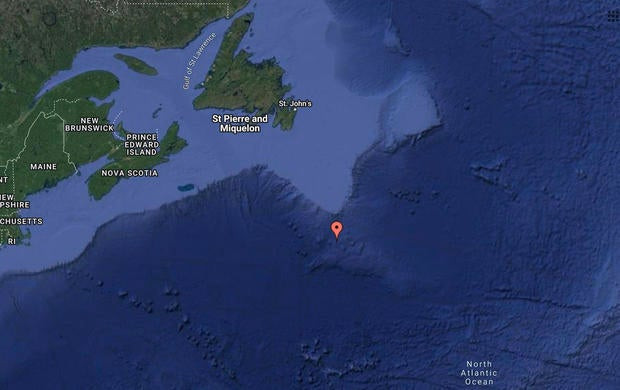The recent news of a missing submersible en route to the Titanic wreckage has once again brought the tragic story of the “unsinkable” ship to the forefront. While the world关注es the ongoing search and rescue efforts, many are reminded of the pivotal question: where exactly did the Titanic sink? This article delves into the geographical details of the Titanic’s final resting place, exploring the planned route, the location of the disaster, and the depth of the wreckage.
The Titanic’s Doomed Maiden Voyage
Dubbed “unsinkable” due to its advanced engineering for the time, the RMS Titanic embarked on its maiden voyage from Southampton, England, in April 1912, with New York City as its intended destination. The grand ocean liner made scheduled stops at Cherbourg, France, and Queenstown (now Cobh), Ireland, before setting course across the vast Atlantic Ocean. The return journey was planned to include Plymouth, England, and Cherbourg, but tragically, the Titanic never reached New York.
On the night of April 14, 1912, and into the early hours of April 15, the unthinkable happened. Carrying approximately 2,240 passengers and crew, the Titanic struck an iceberg in the North Atlantic. The collision proved fatal; the immense vessel broke apart and sank to the ocean floor, resulting in the loss of around 1,500 lives. The area where this catastrophe occurred is notoriously known as “Iceberg Alley,” a region off the coast of Newfoundland, Canada, where icebergs calved from Greenland’s glaciers frequently drift, especially during spring and summer.
Another passenger ship, the Carpathia, which was en route from New York, played a crucial role in the aftermath. Upon receiving distress signals from the Titanic, the Carpathia raced towards the location and successfully rescued 705 survivors from lifeboats before returning to New York City on April 18.
 A map depicting the location of the Titanic sinking in the North Atlantic Ocean.
A map depicting the location of the Titanic sinking in the North Atlantic Ocean.
Unveiling the Titanic Wreckage Location
The Titanic sank in the Atlantic Ocean, approximately 400 miles off the coast of Newfoundland, Canada. More precisely, most of the wreckage lies about 350 miles southeast of Newfoundland. When considering its intended path, the disaster struck roughly 1,300 miles east of its final destination, New York City.
For decades, the precise location of the Titanic remained a mystery, shrouded in the depths of the ocean. It wasn’t until 1985 that a joint Franco-American expedition led by marine explorer Robert Ballard successfully located the wreckage. This monumental discovery provided closure to a long-standing enigma and allowed for further exploration of the site. Ballard himself revisited the site approximately 20 years later to study the ongoing deterioration of the iconic ship.
 A map depicting the location of the Titanic sinking in the North Atlantic Ocean.
A map depicting the location of the Titanic sinking in the North Atlantic Ocean.
How Deep Did the Titanic Sink?
The Titanic rests on the ocean floor at an astounding depth of about 12,500 feet (approximately 3,800 meters) below sea level. The immense pressure and darkness at this depth create an incredibly challenging environment for exploration. The shipwreck itself is not a single, unified piece. The Titanic broke into two main sections – the bow and the stern – which now lie about 2,600 feet apart on the seabed. A vast debris field surrounds these major sections, scattered with remnants of the ship and personal belongings, painting a poignant picture of the disaster.
Despite the harsh conditions, numerous expeditions have ventured to these depths, capturing images and videos of the wreck. In May of this year, the first full-sized digital scan of the Titanic wreckage was unveiled, providing an unprecedented 3D view of the entire shipwreck. This scan, a result of a collaboration between Magellan Ltd and Atlantic Productions, offers new insights into the ship’s condition and the details of its tragic demise.
The Missing Submersible and the Haunting Location of the Titanic
The recent disappearance of the submersible operated by OceanGate Expeditions, carrying tourists to view the Titanic wreckage, serves as a stark reminder of both the allure and the peril associated with the deep sea and the Titanic’s story. The search area for the missing sub, approximately 900 miles off Cape Cod, is geographically related to the Titanic’s location, highlighting the vastness of the Atlantic and the challenges of operating in such remote and deep waters.
The ongoing search for the submersible underscores the inherent risks of deep-sea exploration and brings renewed attention to the site where the Titanic met its fate. The location, hundreds of miles from land and thousands of feet beneath the surface, remains a remote and challenging environment, mirroring the scale of the tragedy that unfolded there over a century ago.

